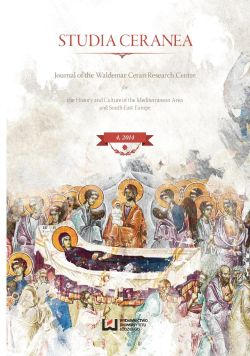Some Anti-Heretic Fragments in the 14th Century Bulgarian Canon Law Miscellanies
Some Anti-Heretic Fragments in the 14th Century Bulgarian Canon Law Miscellanies
Author(s): Mariyana Tsibranska-KostovaSubject(s): Cultural history, Social history, 13th to 14th Centuries, Eastern Orthodoxy
Published by: Wydawnictwo Uniwersytetu Łódzkiego
Keywords: Bulgarian medieval heresies; Canon Law; Canon Law miscellanies; Medieval heresies; Orthodox-Catholic relations; Second Bulgarian Empire
Summary/Abstract: It is well known that the major anti-heretic written source from the Second Bulgarian Empire is the Tsar Boril’s Synodicon, proved to have been compiled to serve the Synod against the Bogomils, convened in Tărnovo in 1211. However, the subsequent century is also marked by the anti- heretic line in various types of manuscripts which shape the image of the so called Second Golden Age of the Bulgarian literature and culture. The reign of John Alexander (1331–1371) is reputed to be the richest period of compiling miscellanies – encyclopedic, ascetic, and monastic, or for individual reading of the royal family and court. An important account of them is the manuscripts of legal content which vary from functional guides with Canon Law rules to complex compilations of material from diverse sources. They deserve to be investigated not only as a part of the cultural system but also as principal evidences how the mechanism of regulation in the tripartite relationship Law- Society-Culture has functioned. The latest discoveries and the up to day of the catalogued database of Slavonic manuscripts in the Bulgarian repositories and the Russian libraries proved the undisputable role of the Middle Bulgarian written tradition as transmitter of the official attitude against every deviation from the Orthodoxy in three main areas: 1. the traditional so called Christological heresies; 2. the heterodox dualist doctrines of Manicheans, Massalians and Paulicians, including Bogomils; 3. the Latins.
- Issue Year: 2014
- Issue No: 4
- Page Range: 261-275
- Page Count: 15
- Language: English

